At 5:02 p.m. on Jan. 15, 2022, the most violent volcanic eruption in 138 years, say geophysicists, hit its explosive peak deep in Tonga, about as far off the radar as the inhabited earth gets.
Unless you live in Tonga. Then the massive Hunga Tonga-Hunga Ha’apai volcano blast was a terrifying 40 miles away for most of the Polynesian nation’s 105,000 people. An estimated 18-megaton firebomb was followed by nine cataclysmic tsunamis lifting ocean levels as high as 49 feet and laying coastal communities and isolated outer islands to ruin under an ash-choked sky. There was barely time to react.
“We felt the shock waves vibrating through our bodies before the almighty bang of the eruption reached us, which sounded like the earth itself splitting open—followed by at least nine immensely powerful tsunamis coming at phenomenal speed,” recounts Mary Lyn Fonua, managing editor of Tonga’s news website, Matangi Tonga, who would sit through a traumatic night in the capital, Nuku’alofa, before surveying an utterly transformed main island of Tongatapu—home to 70 percent of the country’s population. “Photographing the destruction the next day was like stepping into another world.”
Tonga’s 170 islands are spread across an immense span of ocean for a collective land mass equaling about half of Oahu, HI. Fiji (Tonga’s “immediate” neighbor) is 500 miles away. New Zealand is 1,500 miles south.
Last January, when the country’s fiercest submarine volcano fully unleashed for the first time in nearly a millennium, Tonga was alone and unreachable for days before international aid arrived. Here are just a few of the harrowing stories.
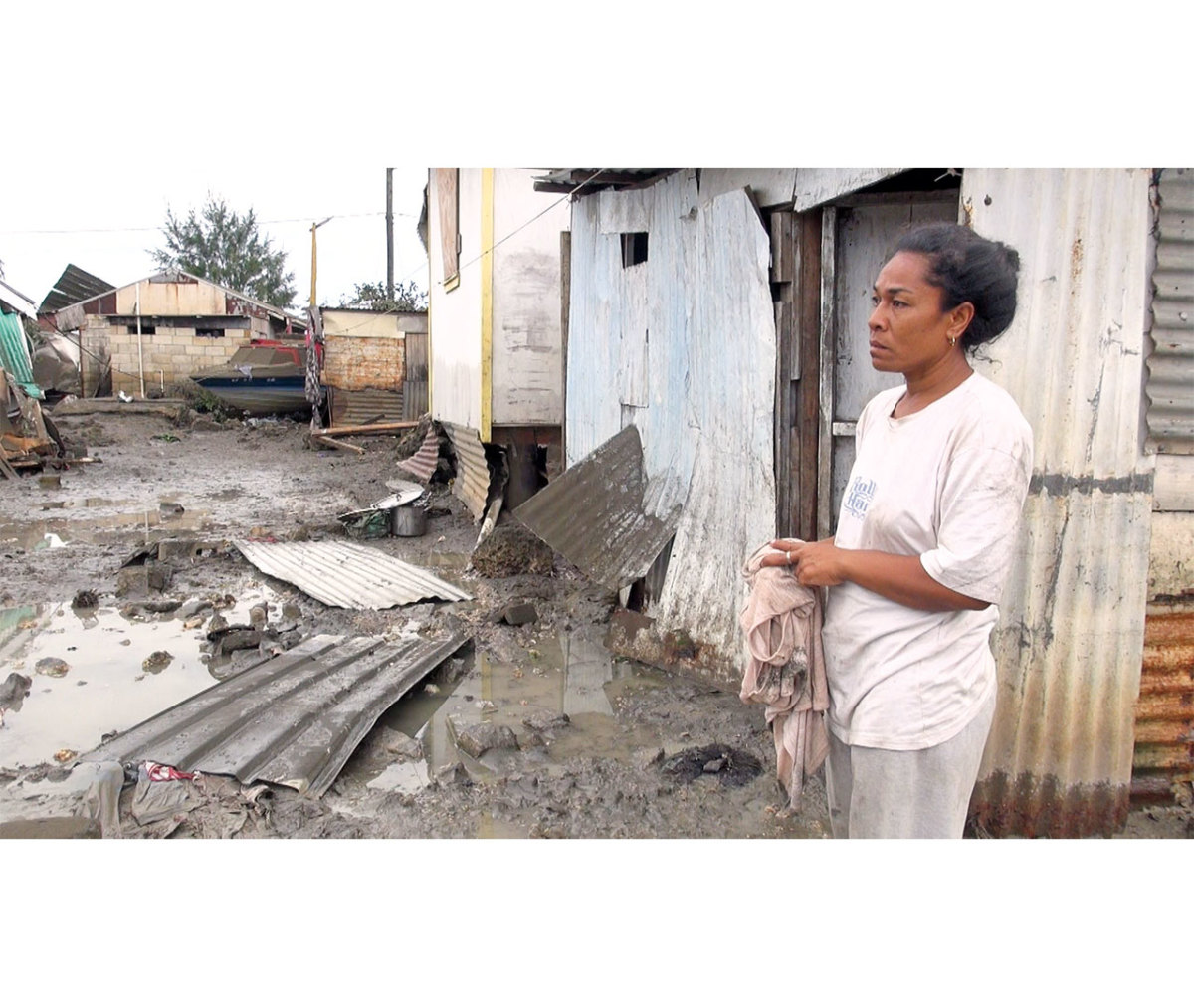
Narrow Escape
Nuku’alofa resident Kato Kakala returns to a destroyed neighborhood after nine tsunamis turned streets into rushing rivers and churned through every home on the block. Fleeing with her three kids to the relative safety of Tonga’s 92-foot, inland “peak” Mata ki ‘Eua during the eruption, she waited out a long night with other displaced families. “That’s our boat,” she tells Tonga’s news website Matangi Tonga, pointing at the mangled remains of her husband’s fishing vessel strewn with debris in the backyard. “Our only life here is the sea.” Then she adds, “Thank God for everything.” The disaster would claim four lives.
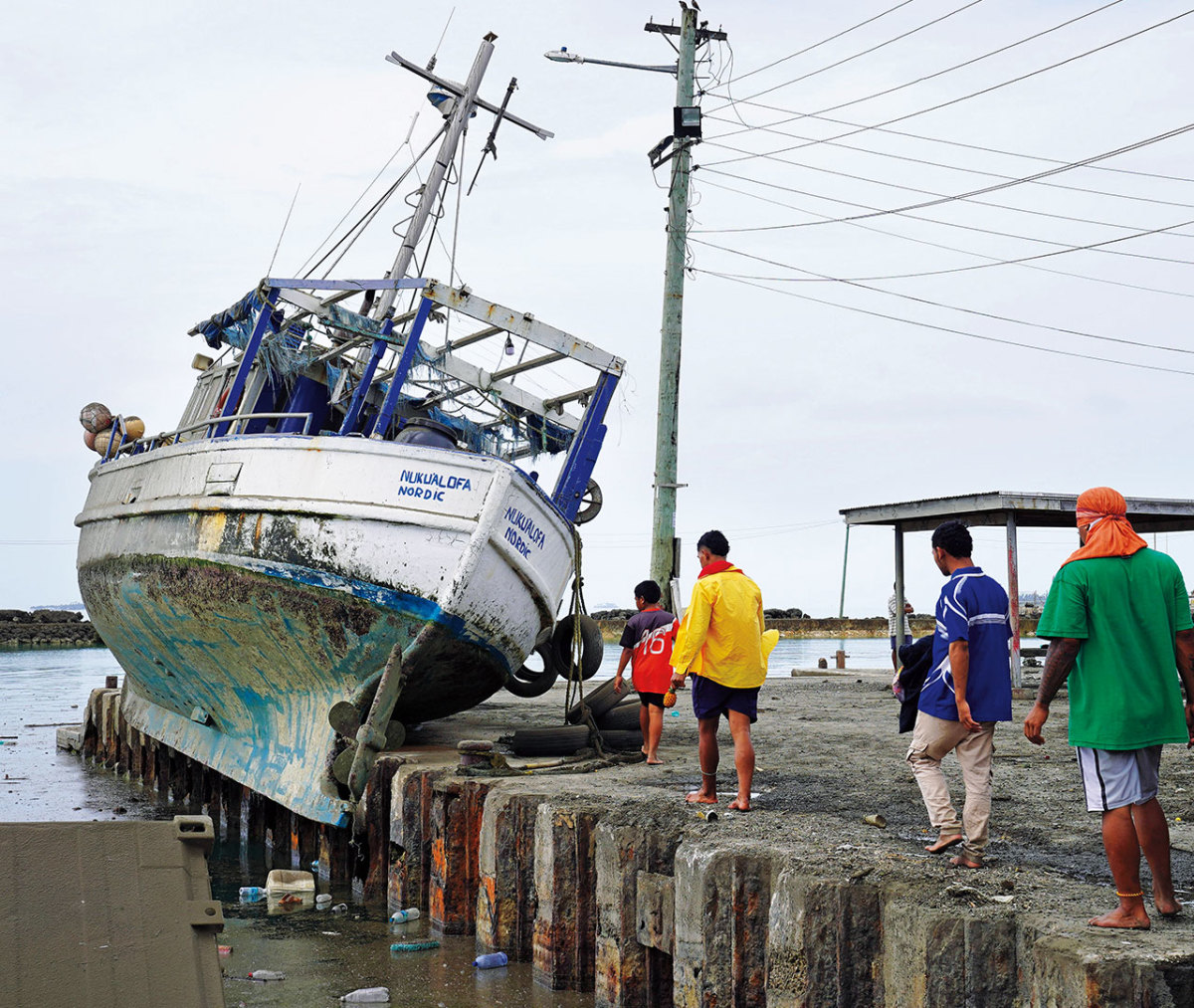
High and Dry
A spared vessel sits in a wreckage-clogged Nuku’alofa wharf the day after multiple tsunamis barreled into Tongatapu coastlines within minutes of the Hunga Tonga-Hunga Ha’apai explosion 40 miles away—sinking fishing fleets, swallowing cars and crashing into living rooms. Panicked gridlock on the capital’s roads led to instant horror scenes. “We were driving toward the sea when a huge wave suddenly came rushing over the top of Vuna Road,” recounts Matangi Tonga staffer Irene Mafi, who sped through a wall of water for high ground with six family members aboard. “There was no turning back.” Amidst screams and blown-out tires, Mafi just made it up the hill before the next wave submerged the only escape route.
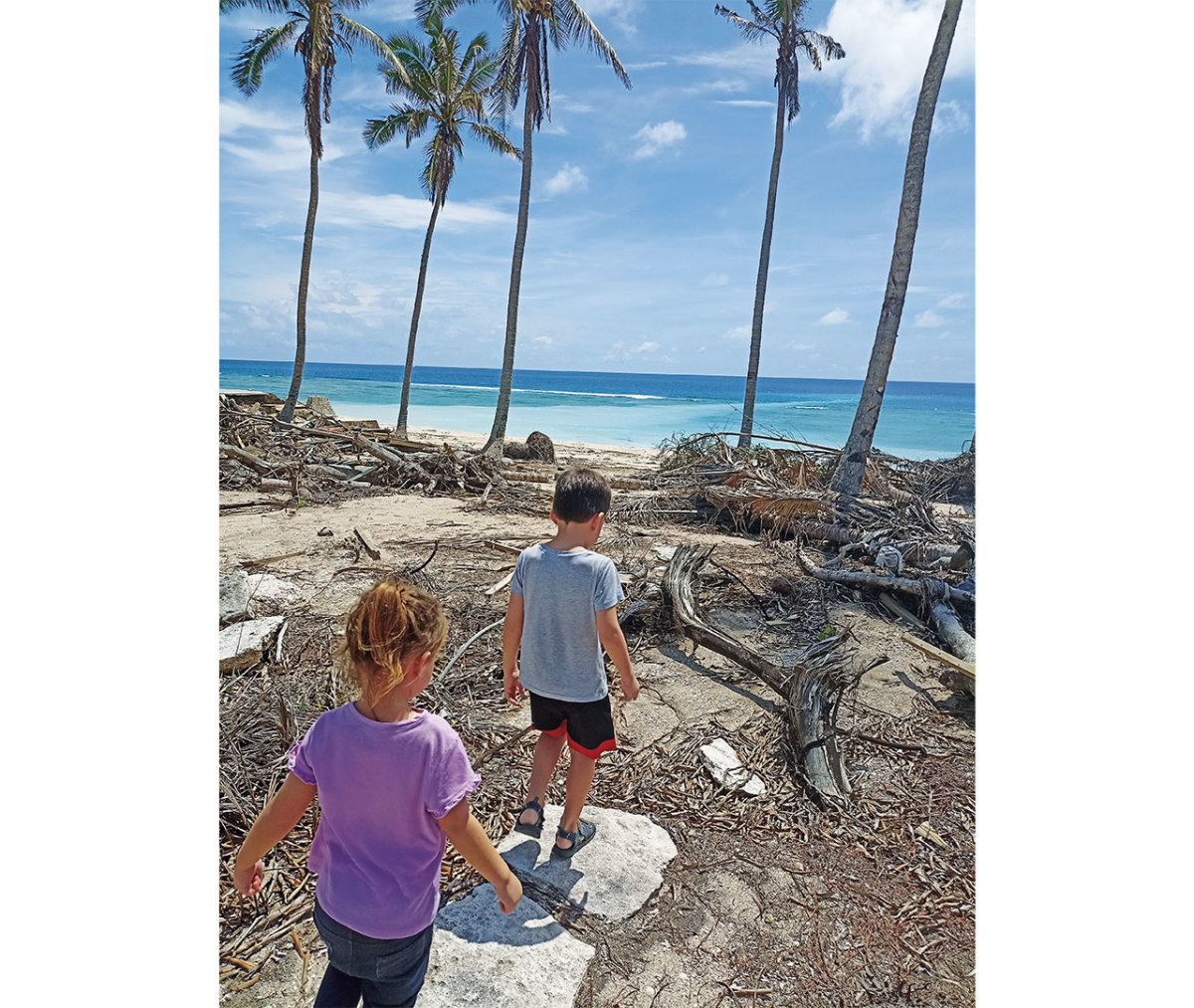
Paradise Thrashed
An eruption-charged ocean swiftly laid to ruin Tongatapu’s top tourist hideaway on its exposed western shore. Flagstones mark the remains of the Blue Banana Beach House, a favorite eco-resort, erased like a sand castle on Jan. 15. “You didn’t see a wave coming,” said Blue Banana owner, artist and surfer Shane Egan, who dove into his car minutes before his entire property was swept away. “It was like a giant tide heading straight at you in fast motion. It was crazy.” Kanokupolu Beach was a popular surfing spot for palangis (Europeans) before Covid closed Tonga to visitors. A few local expat Kiwis and Aussies then had it all to themselves. Among them, Egan (evacuated to Australia after the tsunamis) and New Zealander Peter Henwood (married to a Tongan), who took this photo of his kids, Jeremiah and Penelope. “Now I’m the only surfer left,” Henwood says.
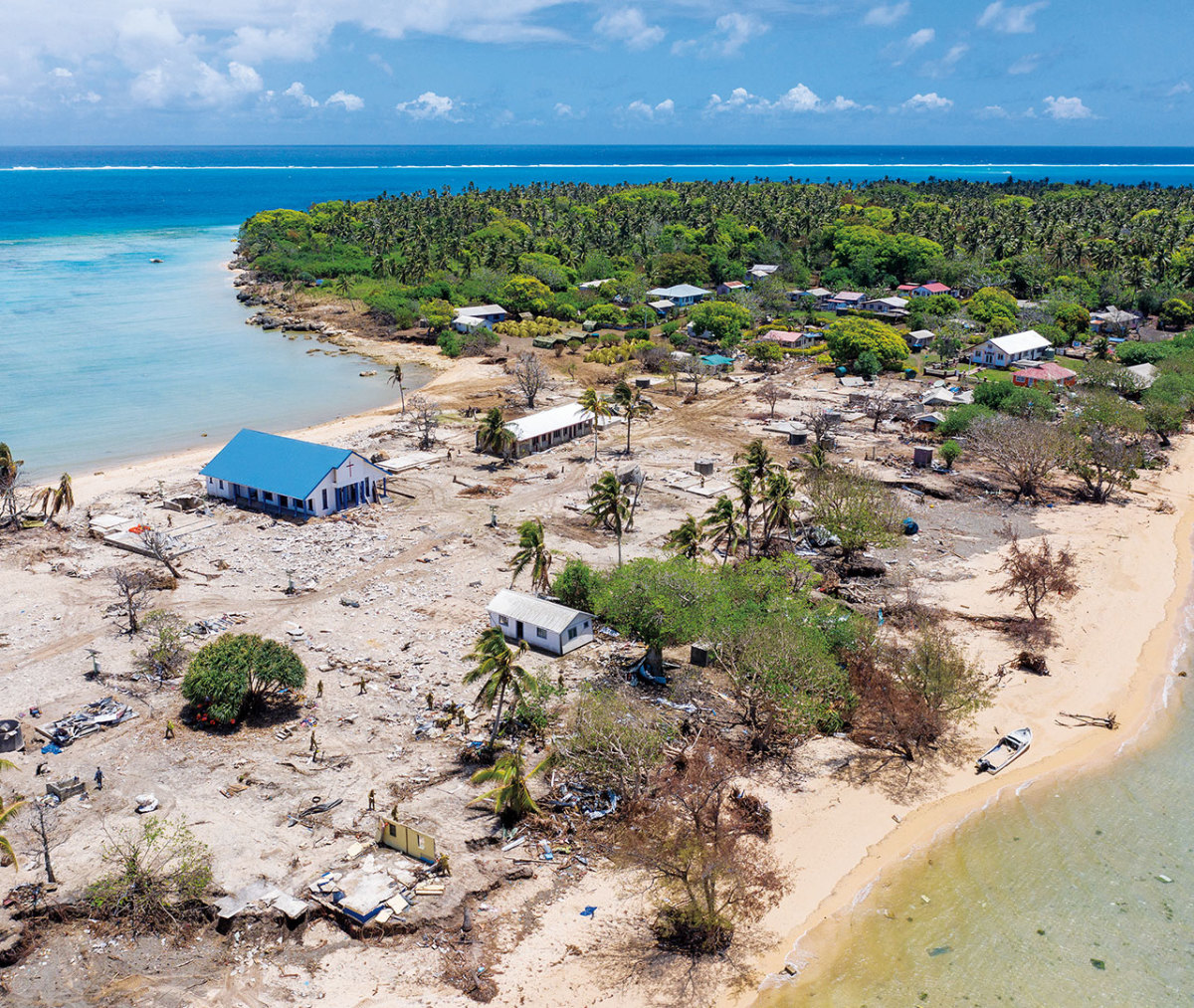
Tsunami Stricken
A Mormon church and scattered buildings are somehow standing after ocean surges rolled over the tiny resort isle of ‘Atata, just north of Nuku’alofa. Much of it was leveled, including the flagship Royal Sunset Island Resort. Fully evacuated, the island of about 100 residents was deemed uninhabitable by international relief crews arriving days after the eruption. ‘Atata would claim Tonga’s greatest survival story in the wake of the disaster. Lisala Folau, a 57-year-old Tongan man swept away by a wave, reported surviving 27 hours at sea on a floating log before reaching safe land. “I could hear my son calling,” Folau told the press afterward. “I didn’t answer because I didn’t want him to swim out to find me.”
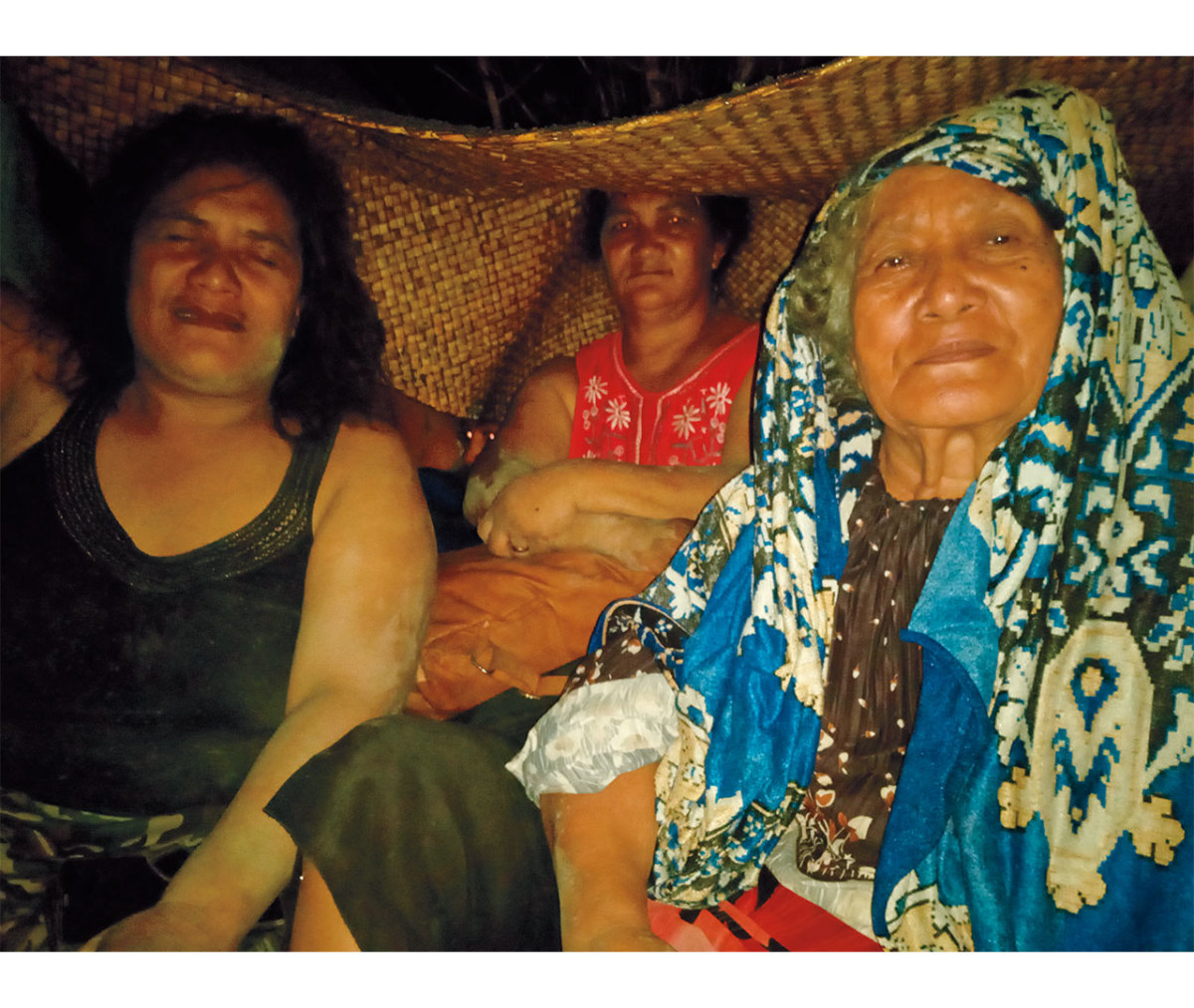
Nowhere to Hide
Eighty-one-year-old Kalisi Levani (right) shelters under a pandanus mat to shield from volcanic rock projectiles on tiny Mango Island (pop. 62)—within close range of the blast. A deafening explosion (audible 5,000 miles away in Alaska) and a plume of ash shooting 20 km into the stratosphere were followed by tsunamis that would flatten every home on the island and send villagers scrambling to higher ground. “By 5:30 p.m. it was dark and we could hear waves crushing the land,” says local Rev. Kisina Toetu’u, who took this photo while awaiting evacuation to Tongatapu. Will any of them return to Mango? “Not in the near future,” he says. “Everything is gone.”
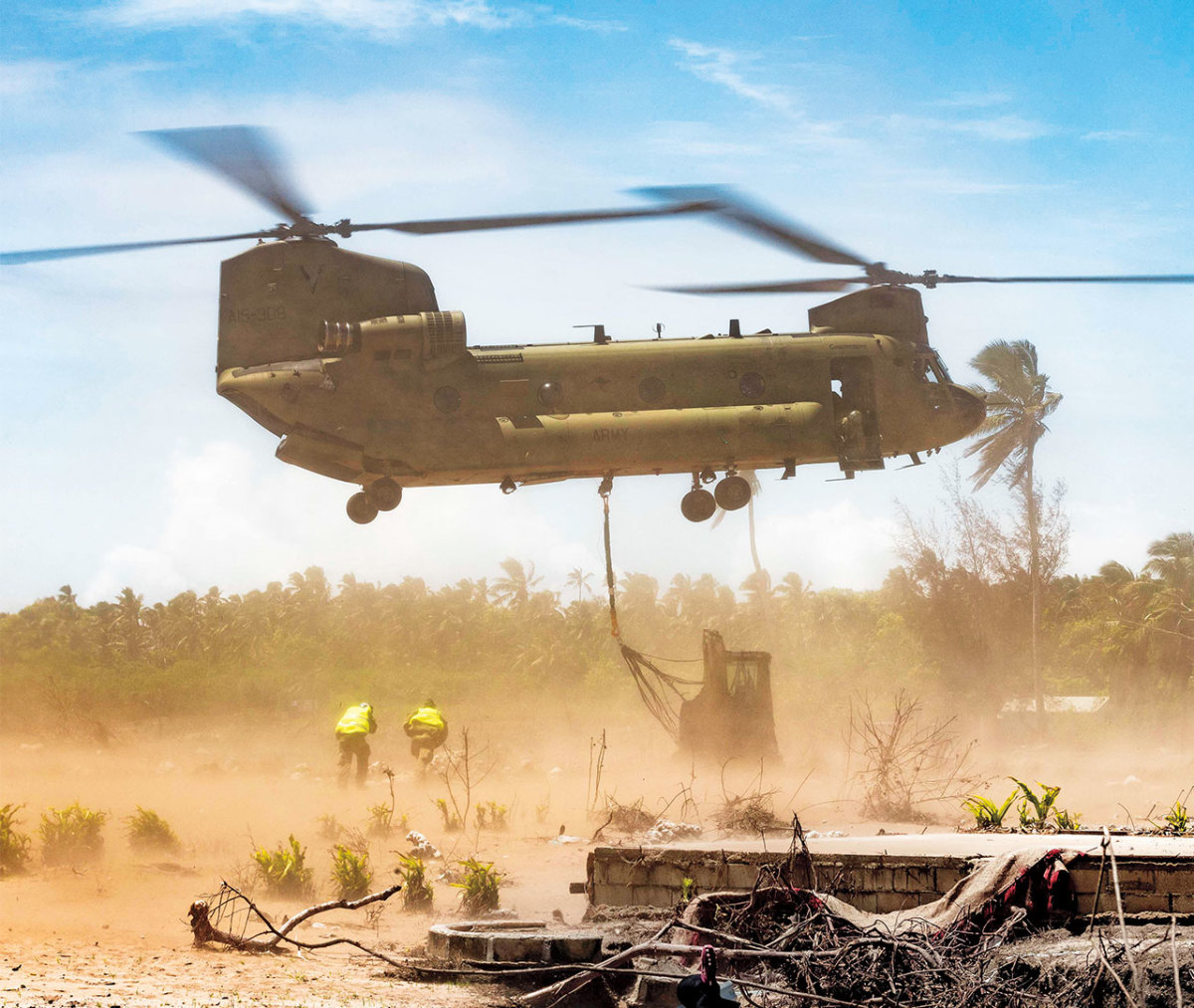
Like a War Zone
An Australian Army CH-47F Chinook helicopter delivers cleanup equipment on ‘Atata—an outer isle near the volcano. “Those waves must have been just huge to do this,” said Tongan-born Royal Australian Navy chaplain Simote Finau, surveying a decimated island with soldiers from Australia’s Operation Tonga Assist task force. “My heart and prayers go out to all the people of ‘Atata.” Australia deployed its largest ship, the HMAS Adelaide, for relief efforts in a global push that included aid from New Zealand, Britain, China and Japan. Airborne help was held up for days by layers of ash obstructing the runway at Nuku’alofa airport—cleared by volunteers with shovels and wheelbarrows. Communication would be crippled when the undersea cable connecting Tonga to the world was blown to bits by the eruption.
from Men's Journal https://ift.tt/jlQ3fVW




0 comments